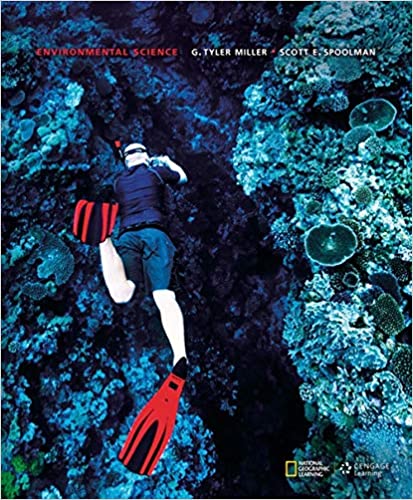
Environmental Science 15th Edition by Scott Spoolman,Tyler Miller
Edition 15ISBN: 978-1305090446
Environmental Science 15th Edition by Scott Spoolman,Tyler Miller
Edition 15ISBN: 978-1305090446 Exercise 9
BIOPLASTICS
Most of today's plastics are made from organic polymers produced from petroleum-based chemicals. This may change as scientists shift to developing plastics made from biologically based chemicals.
Henry Ford, who developed the first Ford car and founded Ford Motor Company, supported research on the development of a bioplastic made from soybeans and another made from hemp. A 1914 photograph shows him using an ax to strike the body of a Ford car made from soy bioplastic to demonstrate its strength and resistance to denting.
However, as oil became widely available, petrochemical plastics took over the market. Now, with projected climate change and other environmental problems associated with the use of oil, chemists are stepping up efforts to make biodegradable and more environmentally sustainable plastics. These bioplastics can be made from corn, soy, sugarcane, switchgrass, chicken feathers, and some components of garbage.
Compared to conventional oil-based plastics, properly designed bioplastics are lighter, stronger, and cheaper, and the process of making them requires less energy and produces less pollution per unit of weight. Instead of being sent to landfills, some packaging made from bioplastics can be composted to produce a soil conditioner, in keeping with the chemical cycling principle of sustainability.
Critical Thinking
What might be some disadvantages of bioplastics? Do you think they outweigh the advantages?
Most of today's plastics are made from organic polymers produced from petroleum-based chemicals. This may change as scientists shift to developing plastics made from biologically based chemicals.
Henry Ford, who developed the first Ford car and founded Ford Motor Company, supported research on the development of a bioplastic made from soybeans and another made from hemp. A 1914 photograph shows him using an ax to strike the body of a Ford car made from soy bioplastic to demonstrate its strength and resistance to denting.
However, as oil became widely available, petrochemical plastics took over the market. Now, with projected climate change and other environmental problems associated with the use of oil, chemists are stepping up efforts to make biodegradable and more environmentally sustainable plastics. These bioplastics can be made from corn, soy, sugarcane, switchgrass, chicken feathers, and some components of garbage.
Compared to conventional oil-based plastics, properly designed bioplastics are lighter, stronger, and cheaper, and the process of making them requires less energy and produces less pollution per unit of weight. Instead of being sent to landfills, some packaging made from bioplastics can be composted to produce a soil conditioner, in keeping with the chemical cycling principle of sustainability.
Critical Thinking
What might be some disadvantages of bioplastics? Do you think they outweigh the advantages?
Explanation
The disadvantages of using bioplastics a...
Environmental Science 15th Edition by Scott Spoolman,Tyler Miller
Why don’t you like this exercise?
Other Minimum 8 character and maximum 255 character
Character 255


